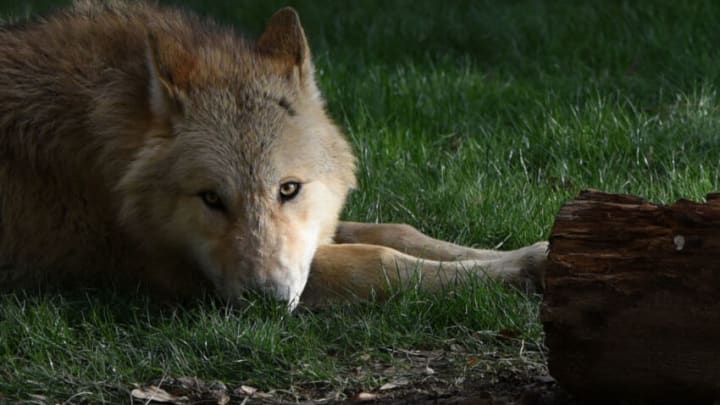Not a whole lot is known today about just how dog and man came to form the oh-so-important relationship the two species have. We know we love our furry little sidekicks and depend on them perhaps just as much as they depend on us, but a group of researchers are taking a look back at just how that bond was first formed and that relationship cultivated—specifically the domestication of dogs. A new study has shined quite a bit of light into some interesting new facts found about how dogs were first domesticated.
A new study published at Nature shows a specific lineage of the Grey Wolf in particular. As per the study, it was this breed of dog or rather species, that is linked to being the first breed to be somewhat domesticated, as it was the species that survived the ice age…thus spreading across what was then the desolate earth.
So how far back does the domesticated dog really go?
In the aforementioned study, researchers analyzed 72 ancient wolf species going back 100, 000 years! Among the specifics offered up about placement geographically, we learned that dogs, who were closely related to ancient wolves, could be found in Eastern Eurasia. And that the first signs of domestication (in this region) were uncovered through the study.
This lineage is present everywhere on the planet outside of Antarctica and Australia. Anders Bergstrom, who was one of the writers of the aforementioned report had this to say on the matter:
"“Our study takes important steps forward on the question of dog origins…Studying ancient wolves that lived close to the time of dog domestication, we found that dogs overall are more closely related to ancient wolves in Asia than to ancient wolves in Europe, suggesting a domestication process somewhere in the east…We find that some dogs, in particular those in Africa and the Near East, have an additional genetic contribution from a second wolf source population, one that is related to wolves in the west…There thus seems to have been at least two separate wolf source populations, giving rise to dual ancestry in dogs today…There are two scenarios that could explain the dual ancestry that we have found in dogs…First, there could have been two independent domestication processes, with the two populations then coming together and merging into one. Second, there could have been just one domestication process, followed by gene flow from local wild wolves into dogs after dogs had arrived in e.g. the Near East. We cannot tell these two scenarios apart currently, but hopefully future studies of early dogs will be able to distinguish them…None of the ancient wolves included in our study are an exact match for either of the two source populations, suggesting that the sources will have lived in parts of the world that we have not yet sampled…So while our study shows that there would have been at least two source populations, the search for those sources will continue. Hopefully, by sampling more ancient wolf genomes from other parts of the world, future studies will be able to narrow down more precisely where dogs come from.”"
(As reported via salon.com in Transcription.)
And what place does dog sledding have in all of this? I mean anyone who has read the work of Jack London and has studied the mushing stories from the North knows that wolves, or rather these days the Husky breeds, are ideal for such work…and in the end isn’t that a massive relationship and or bond between man and animal?
Of course it is, and the scientists who conducted the study found that because of specific needs that ancient civilizations had, i.e., “long-distance travel and transportation of resources, in which dog sledding would have been highly advantageous — if not necessary….”
Interestingly enough the scientists involved in the study or really any other group of researchers still have no precise idea where dogs come from exactly, but studies like this show that they’re getting closer.
In the end, perhaps the biggest thing to take away from this study, a key portion of it really, is that these researchers found out that dogs and humans are quite similar in one major way. The piece sourced above suggests that the human genome has about 2.5 percent Neanderthal DNA.
I mean we all know that, right…especially if we paid attention back in school. That makes us an amalgamation of primates…whereas dogs are likewise the amalgamation of two ancient breeds as well.
So no wonder we’ve grown so close over the long years since our respective first appearances made on this earth; we were a match made in heaven if you ask me. It couldn’t get any more apropos than that I say.
Anything you’ve uncovered about your dog’s breed and maybe a little about how old it is? What do you think about how dogs were potentially domesticated? Do you think the Neanderthal had domesticated dogs of their own? Fill us in on your thoughts!
